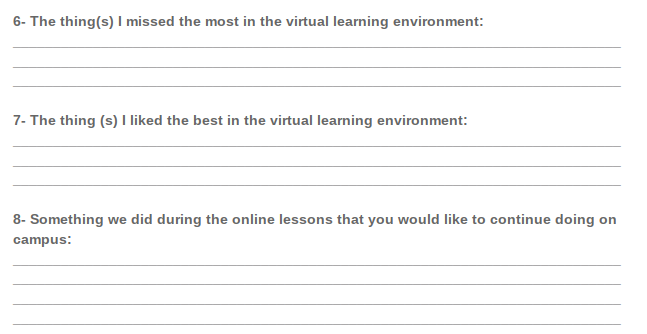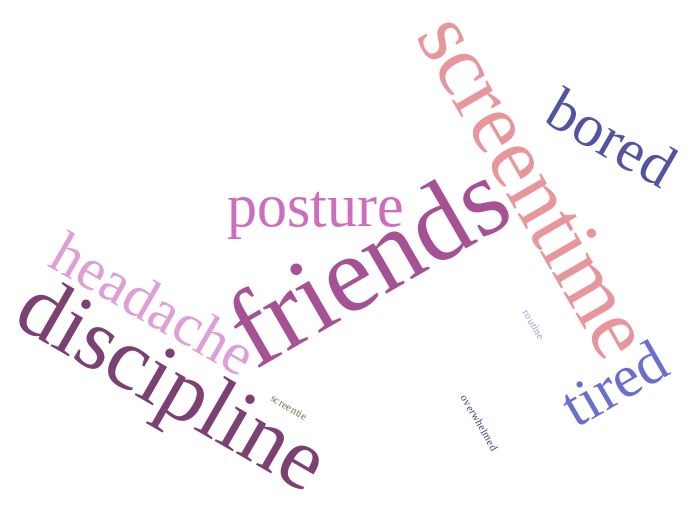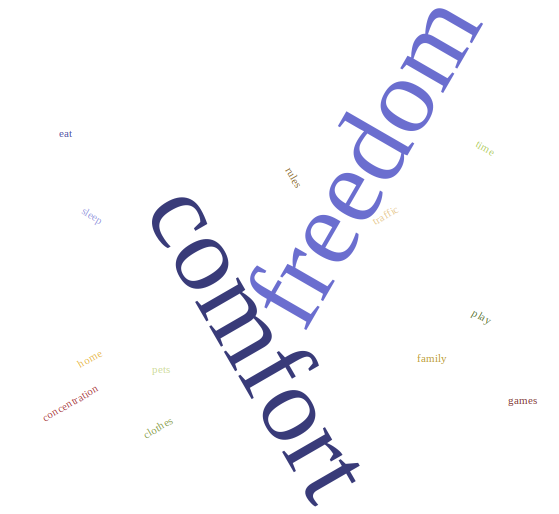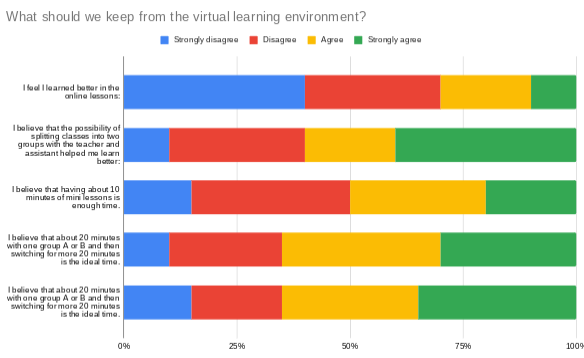Bringing the lessons learned in the Virtual Learning Environment to campus
What elements from the Virtual Learning class structure should be kept back to campus? - How should classes be organized? - How long should each step last?
General topic of interest
Since the beginning of the quarantine, we have attempted different models of class structure, allocating time to moments such as the mini-lesson, controlled practice, open practice, closure and exit ticket. We are curious to learn which set ups were perceived as the most successful ones so that we can adopt them when back to campus.
Participants
Middle School learners
Data collecting approach
Quantitative-qualitative question form applied to all Middle School learners reflecting upon the lessons learned with the distance learning experience.
Data collecting example
Question form composed of multiple choice questions with four levels of agreement to the given statements (strongly disagree, disagree, agree and strongly agree). Followed by open response questions.
Emerging results
The overall perception was that most learners preferred the class structure already used on campus. This realization seemed stronger in later years (Grades 7 and 8), than in the earlier years of Middle School (Grade 6). The most valued element from the virtual learning environment was the possibility of splitting the class with the assistant teacher, indicating that learners perceive the importance of differentiation. When asked about the best experiences in distance learning, some of the most mentioned keywords were "comfortable, time and freedom". When asked about the worst aspects of distance learning, some of the most mentioned keywords were "friends, discipline and screen time".
Reflections
This study brings evidence that, although the class structure adopted throughout the quarantine was considered adequate by most students, the overall perception was that distance learning was perceived as less effective than on campus. The study also points out the value of differentiation, even in distance learning.
Next steps
Whether we transition from a mostly virtual or a hybrid model in 2021, we should consider the importance of differentiated moments, when learners are split into smaller groups.







